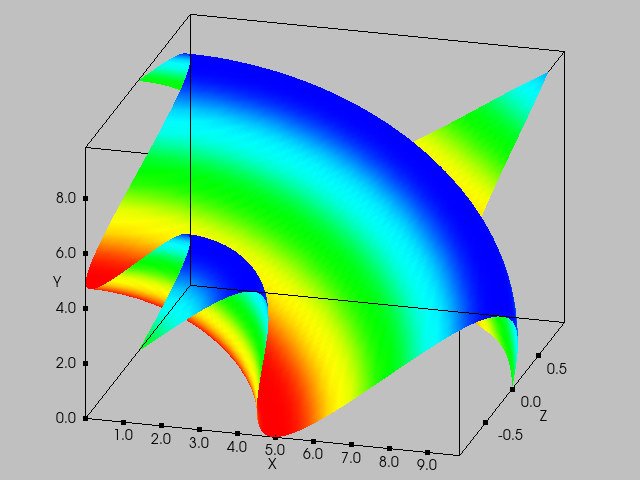SurfacePlot
vtk-examples/PythonicAPI/Plotting/SurfacePlot
Question
If you have a question about this example, please use the VTK Discourse Forum
Code¶
SurfacePlot.py
#!/usr/bin/env python3
from math import sin, sqrt
# noinspection PyUnresolvedReferences
import vtkmodules.vtkInteractionStyle
# noinspection PyUnresolvedReferences
import vtkmodules.vtkRenderingContextOpenGL2
# noinspection PyUnresolvedReferences
import vtkmodules.vtkRenderingOpenGL2
from vtkmodules.vtkChartsCore import (
vtkChartXYZ,
vtkPlotSurface
)
from vtkmodules.vtkCommonColor import vtkNamedColors
from vtkmodules.vtkCommonCore import vtkFloatArray
from vtkmodules.vtkCommonDataModel import (
vtkRectf,
vtkTable,
vtkVector2i
)
from vtkmodules.vtkRenderingContext2D import vtkContextMouseEvent
from vtkmodules.vtkViewsContext2D import vtkContextView
def main():
colors = vtkNamedColors()
geometry = vtkRectf(10.0, 10.0, 630, 470)
chart = vtkChartXYZ(geometry=geometry)
# chart.SetGeometry(vtkRectf(10.0, 10.0, 630, 470))
view = vtkContextView()
view.renderer.background = colors.GetColor3d("Silver")
view.render_window.size = (640, 480)
view.scene.AddItem(chart)
# Create a surface
table = vtkTable()
num_points = 70
inc = 9.424778 / (num_points - 1)
for i in range(num_points):
arr = vtkFloatArray()
table.AddColumn(arr)
table.SetNumberOfRows(num_points)
for i in range(num_points):
x = i * inc
for j in range(num_points):
y = j * inc
table.SetValue(i, j, sin(sqrt(x * x + y * y)))
# Set up the surface plot we wish to visualize and add it to the chart
plot = vtkPlotSurface(x_range=(0, 9.424778), y_range=(0, 9.424778))
plot.SetInputData(table)
plot.GetPen().SetColorF(colors.GetColor3d("Tomato"))
chart.AddPlot(plot)
view.render_window.multi_samples = 0
view.interactor.Initialize()
view.render_window.window_name = 'SurfacePlot'
view.render_window.Render()
# Rotate
mouse_event = vtkContextMouseEvent()
mouse_event.interactor = view.interactor
pos = vtkVector2i()
last_pos = vtkVector2i()
mouse_event.button = vtkContextMouseEvent.LEFT_BUTTON
last_pos.Set(100, 50)
mouse_event.SetLastScreenPos(last_pos)
pos.Set(150, 100)
mouse_event.SetScreenPos(pos)
s_p = [float(x) for x in pos]
l_sp = [float(x) for x in last_pos]
screen_pos = mouse_event.screen_pos
last_screen_pos = mouse_event.last_screen_pos
chart.MouseMoveEvent(mouse_event)
view.GetInteractor().Start()
if __name__ == '__main__':
main()
